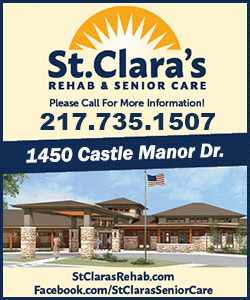|
 Researchers examined data on 441,812 patients diagnosed with lung
cancer between 2010 and 2014. Overall, almost 22% received no
treatment at all. Another 16% received less intensive treatment than
National Comprehensive Cancer Network guidelines recommend for
optimal survival odds. Researchers examined data on 441,812 patients diagnosed with lung
cancer between 2010 and 2014. Overall, almost 22% received no
treatment at all. Another 16% received less intensive treatment than
National Comprehensive Cancer Network guidelines recommend for
optimal survival odds.
Compared to patients under age 50, people 80 and older were 88% less
likely to receive optimal recommended treatment.
And compared to white patients, black patients were 22% less likely
to get recommended treatments, while Hispanic patients had an 8%
lower chance of this.
"While these findings are very concerning, it has always been easier
to identify disparities in care than it has been to understand why
they persist," said Dr. Douglas Arenberg, a co-author of the study
and a pulmonologist at the University of Michigan in Ann Arbor.

"There may be good reasons why less intensive treatment is in fact
medically appropriate," Arenberg said in a statement. "The National
Cancer Database does not include that level of detail."
Data were lacking on individual patient preferences, and it's
possible that at least some people opted against treatment or
against more intense or aggressive treatment, the researchers note
in the Journal of the American Thoracic Society. Some patients may
have been too sick for intensive treatment, but this information was
lacking, too.
It's also possible that some treatment disparities in the study
might be partly due to differences in cultural or community beliefs
about how aggressively to treat cancer or how much intensive
treatment makes sense for elderly patients, the study team notes.
And other factors that might impact treatment choices such as access
and affordability of care weren't examined in the study.
[to top of second column] |

Even so, the results offer fresh evidence that many lung cancer
patients are missing out on treatments that might help them live
longer, researchers conclude.
The study focused on guidelines for treating either non-small cell
lung or small cell lung cancer. Together, the two types of lung
cancer are the leading cause of cancer deaths in the U.S.
The guidelines recommend more aggressive treatment of lung cancer in
its early stages. Treatments can include surgery, chemotherapy,
conventional radiotherapy and stereotactic body radiation therapy, a
specialized and precise type of radiotherapy that delivers high
doses of radiation to small, well-defined tumors. Depending on the
type of lung cancer and its stage, the guidelines may recommend
combinations of these therapies.
One of the most common less-intensive-than-recommended approaches
across all stages of both types of lung cancer was to treat patients
with conventional radiotherapy alone, without other therapies, the
study found.
Patients with advanced non-small cell lung cancer were the least
likely to receive guideline-concordant treatment. The researchers
stress the importance of communicating to patients that the benefits
of cancer treatment for advanced disease, such as chemotherapy, can
extend beyond survival to quality of life and symptom control.

SOURCE: http://bit.ly/34IYfNw Annals of the American Thoracic
Society, online November 1, 2019.
[© 2019 Thomson Reuters. All rights
reserved.] Copyright 2019 Reuters. All rights reserved. This material may not be published,
broadcast, rewritten or redistributed.
Thompson Reuters is solely responsible for this content. |